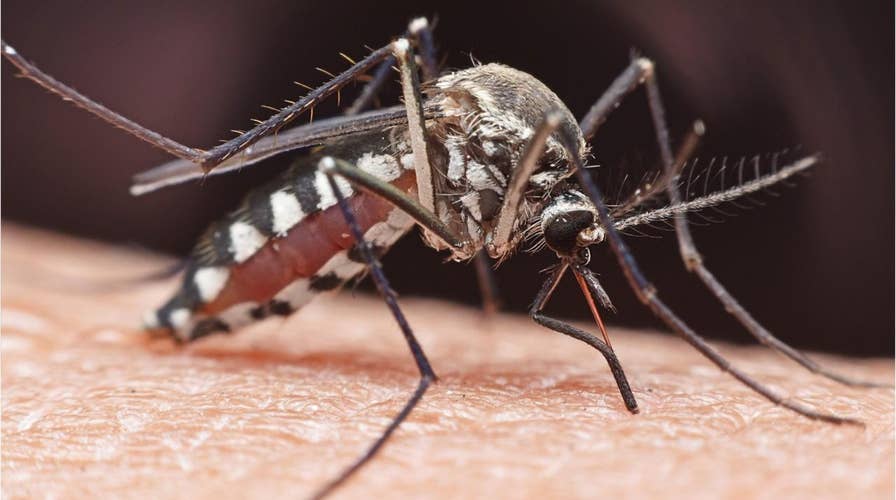How to keep mosquitoes away this summer
Hot and humid weather brings out those pesky mosquitoes. Here are a few simple tips to live a mosquito-free summer.
A 7-year-old Mt. Vernon, Ohio girl has been infected with a rare mosquito-borne virus that, in severe cases, can cause encephalitis, or an inflammation of the brain.
The girl, who was not identified, has been confirmed to have La Crosse virus (LACV), local news outlet Knox Pages reported, citing the Knox County Health Department. It wasn’t immediately clear where or when the girl was infected.
La Crosse virus is typically caused by a bite from an infected eastern tree-hole mosquito, which “lays its eggs in tree holes and man-made containers” and “typically bites during the day,” according to the Centers for Disease Control and Prevention (CDC).
POTENTIALLY FATAL MOSQUITO-BORNE EEE VIRUS DETECTED IN DELAWARE: STATE OFFICIALS
A rare disease — there is an average of 70 cases in the U.S. each year, according to the federal health agency — LACV can make a person feel ill with fever, headache, nausea, vomiting, and fatigue. Most people begin to notice symptoms five to 15 days after they are bitten.
In severe cases, however, LACV can lead to encephalitis — though this is more common in children under 16 “and is often accompanied by seizures,” says the CDC.
“Coma and paralysis occur in some cases,” it added.
The disease is diagnosed through blood and spinal fluid tests.
There’s no specific treatment for the mosquito-borne ailment.
HEARTLAND VIRUS FOUND IN ILLINOIS TICKS, HEALTH OFFICIALS WARN
“Antibiotics are not effective against viruses, and no effective anti-viral drugs have been discovered. Severe illnesses are treated by supportive therapy which may include hospitalization, respiratory support, IV fluids, and prevention of other infections,” the CDC added, noting that most people infected make a full recovery.
People are most at risk for LACV if they live in wooded areas. Most cases in the U.S. have occurred in upper Midwestern, mid-Atlantic and southwestern states. Ohio, specifically, sees about 20 cases of the disease each year, according to the Knox Pages.
The best way to prevent LACV and other mosquito-borne ailments is by draining standing water — like in birdbaths, buckets or on pool covers — which can serve as a breeding ground for these insects. Other preventative measures include covering skin with long-sleeved pants and shirts while outside and using insect repellent containing DEET or another EPA-recognized ingredient.

